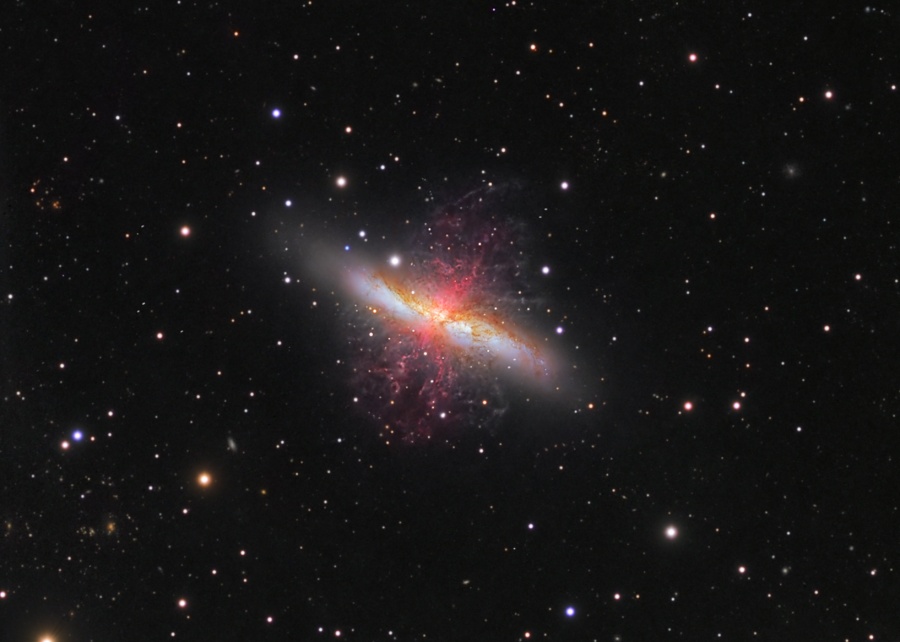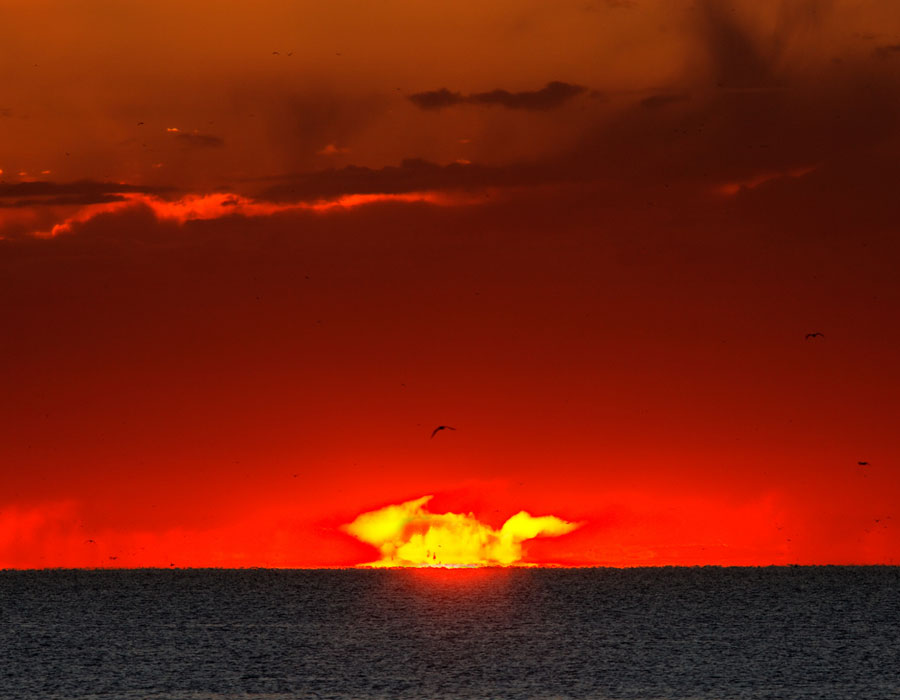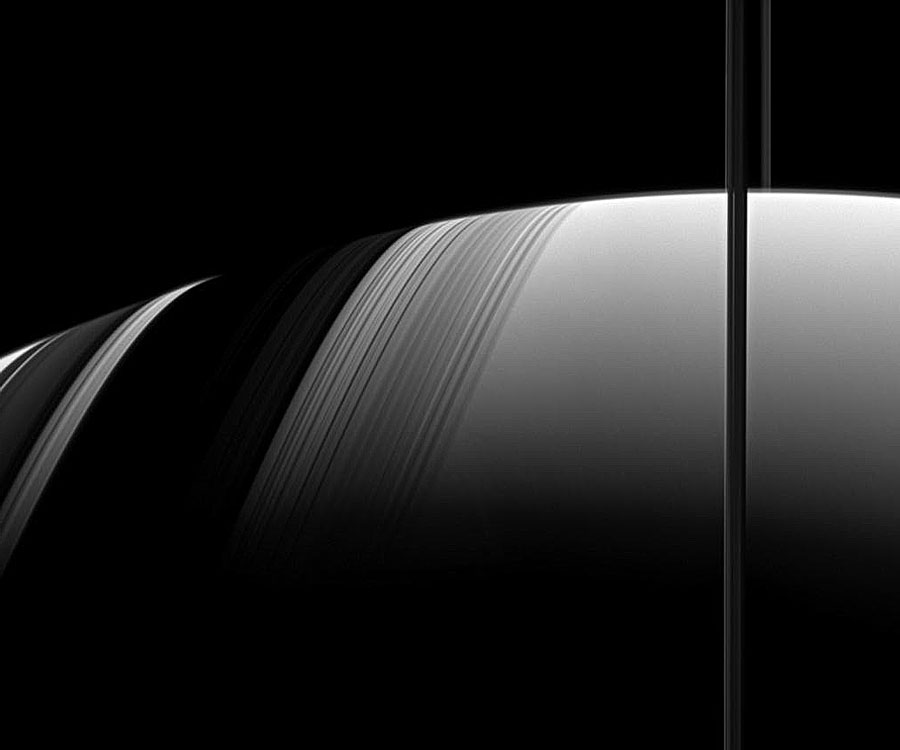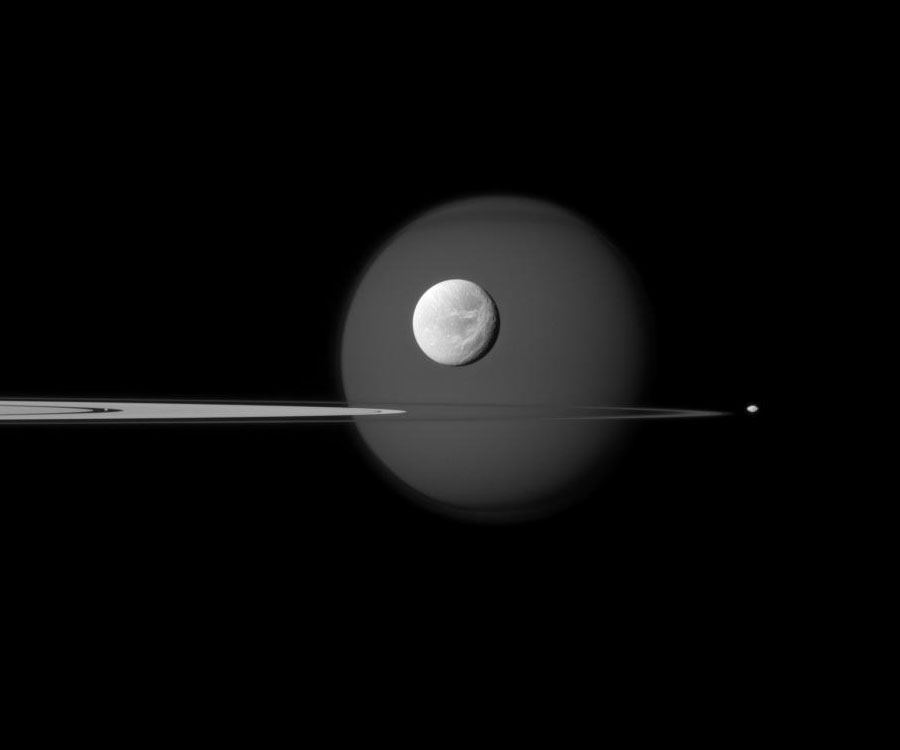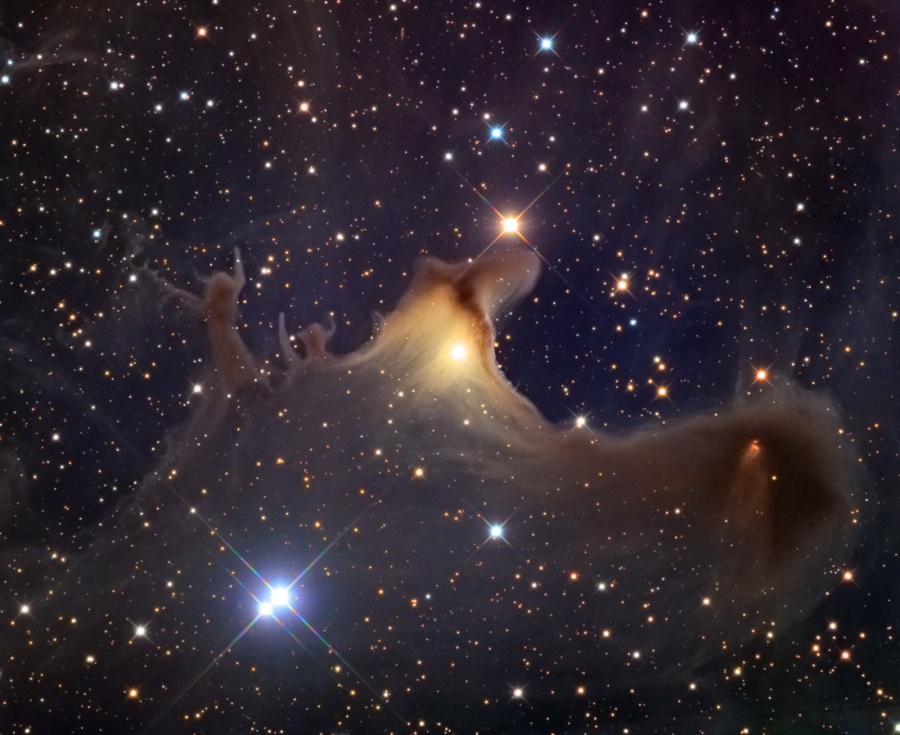Please vote for the two best APODs (image and text) for October, 2011. All titles are clickable and link to the original APOD page.
We ask for your help in choosing an APOM, as this helps Jerry and Robert create "year in APOD images" review lectures and a free PDF calendar at year's end, and provides feedback on which images and APODs were relatively well received.
We are very interested to know why you selected the APODs for which you voted; if you would like to tell us, please reply to this thread. Thank you!
Thank you!
_____________________________________________________________________
<- Previous month's poll
Also known as the Cigar Galaxy for its elongated visual appearance, M82 is a starburst galaxy with a superwind. In fact, through ensuing supernova explosions and powerful winds from massive stars, the burst of star formation in M82 is driving the prodigous outflow of material. Evidence for the superwind from the galaxy's central regions is clear in this sharp composite image, based on data from small telescopes on planet Earth. The composite highlights emission from filaments of atomic hydrogen gas in reddish hues. The filaments extend for over 10,000 light-years. Some of the gas in the superwind, enriched in heavy elements forged in the massive stars, will eventually escape into intergalactic space. Triggered by a close encounter with nearby large galaxy M81, the furious burst of star formation in M82 should last about 100 million years or so. M82 is 12 million light-years distant, near the northern boundary of Ursa Major.
One solar day on a planet is the length of time from noon to noon. A solar day lasts 24 hours on planet Earth. On Mercury a solar day is about 176 Earth days long. And during its first Mercury solar day in orbit the MESSENGER spacecraft has imaged nearly the entire surface of the innermost planet to generate a global monochrome map at 250 meters per pixel resolution and a 1 kilometer per pixel resolution color map. Examples of the maps, mosaics constructed from thousands of images made under uniform lighting conditions, are shown (monochrome at left), both centered along the planet's 75 degrees East longitude meridian. The MESSENGER spacecraft's second Mercury solar day will likely include more high resolution targeted observations of the planet's surface features. (Editor's note: Due to Mercury's 3:2 spin-orbit resonance, a Mercury solar day is 2 Mercury years long.)
Why would a rising Sun look so strange? No one is yet sure. What is clear is that the above unusual sunrise was captured last month from Buenos Aires, Argentina. The body of water in the foreground is Rio de La Plata, considered by many to be the widest river in the world. Although the above image is actually a combination of a normal and a very short exposure needed to avoid oversaturating the bright Sun, the photographer saw this unusual structure with his own eyes, indicating that this effect was caused by neither reflections nor distortions in the camera or lens. What looks like arms on this monster illusion might actually be, for example, low level clouds just thick enough to scatter sunlight without completely blocking the Sun. Additionally, the distortion visible on the lower part of the Sun's image might indicate a Etruscan Vase or Fata Morgana mirage possibly created by a curious refracting layer of air over the water. Unusual atmospheric phenomena are frequently thrilling to see personally, and although most can be traced to well known phenomena, others, for lack of more data, remain mysterious.
It's the bubble versus the cloud. NGC 7635, the Bubble Nebula, is being pushed out by the stellar wind of massive central star BD+602522. Next door, though, lives a giant molecular cloud, visible to the right. At this place in space, an irresistible force meets an immovable object in an interesting way. The cloud is able to contain the expansion of the bubble gas, but gets blasted by the hot radiation from the bubble's central star. The radiation heats up dense regions of the molecular cloud causing it to glow. The Bubble Nebula, pictured above in scientifically mapped colors to bring up contrast, is about 10 light-years across and part of a much larger complex of stars and shells. The Bubble Nebula can be seen with a small telescope towards the constellation of the Queen of Aethiopia (Cassiopeia).
Saturn's rings form one of the larger sundials known. This sundial, however, determines only the season of Saturn, not the time of day. In 2009, during Saturn's last equinox, Saturn's thin rings threw almost no shadows onto Saturn, since the ring plane pointed directly toward the Sun. As Saturn continued in its orbit around the Sun, however, the ring shadows become increasingly wider and cast further south. These shadows are not easily visible from the Earth because from our vantage point near the Sun, the rings always block the shadows. The above image was taken in August by the robotic Cassini spacecraft currently orbiting Saturn. The rings themselves appear as a vertical bar on the image right. The Sun, far to the upper right, shines through the rings and casts captivatingly complex shadows on south Saturn, on the image left. Cassini has been exploring Saturn, its rings, and its moons since 2004, and is expected to continue until at least the maximum elongation of Saturn's shadows occurs in 2017.
On October 29 (UT), Jupiter, the solar system's largest planet, will be at opposition, opposite the Sun in planet Earth's sky, shining brightly and rising as the Sun sets. That configuration results in Jupiter's almost annual closest approach to planet Earth, so near opposition the gas giant offers earthbound telescopes stunning views of its stormy, banded atmosphere and large Galilean moons. This sharp snapshot of Jupiter was captured on October 13 with the 1 meter telescope at the Pic Du Midi mountain top observatory in the French Pyrenees. North is up in the image that shows off oval shaped vortices and planet girdling dark belts and light zones. Also seen in remarkable detail, Jupiter's icy Ganymede, the solar system's largest moon, is emerging from behind the planet (top) while volcanic Io enters the frame near the lower left edge.
A fourth moon is visible on the above image if you look hard enough. First -- and furthest in the background -- is Titan, the largest moon of Saturn and one of the larger moons in the Solar System. The dark feature across the top of this perpetually cloudy world is the north polar hood. The next most obvious moon is bright Dione, visible in the foreground, complete with craters and long ice cliffs. Jutting in from the left are several of Saturn's expansive rings, including Saturn's A ring featuring the dark Encke Gap. On the far right, just outside the rings, is Pandora, a moon only 80-kilometers across that helps shepherd Saturn's F ring. The fourth moon? If you look closely in the Encke Gap you'll find a speck that is actually Pan. Although one of Saturn's smallest moons at 35-kilometers across, Pan is massive enough to help keep the Encke gap relatively free of ring particles.
Spooky shapes seem to haunt this starry expanse, drifting through the night in the royal constellation Cepheus. Of course, the shapes are cosmic dust clouds faintly visible in dimly reflected starlight. Far from your own neighborhood on planet Earth, they lurk at the edge of the Cepheus Flare molecular cloud complex some 1,200 light-years away. Over 2 light-years across the ghostly nebula and relatively isolated Bok globule, also known as vdB 141 or Sh2-136, is near the center of the field. The core of the dark cloud on the right is collapsing and is likely a binary star system in the early stages of formation. Even so, if the spooky shapes could talk, they might well wish you a happy Halloween.
<- Previous month's poll
